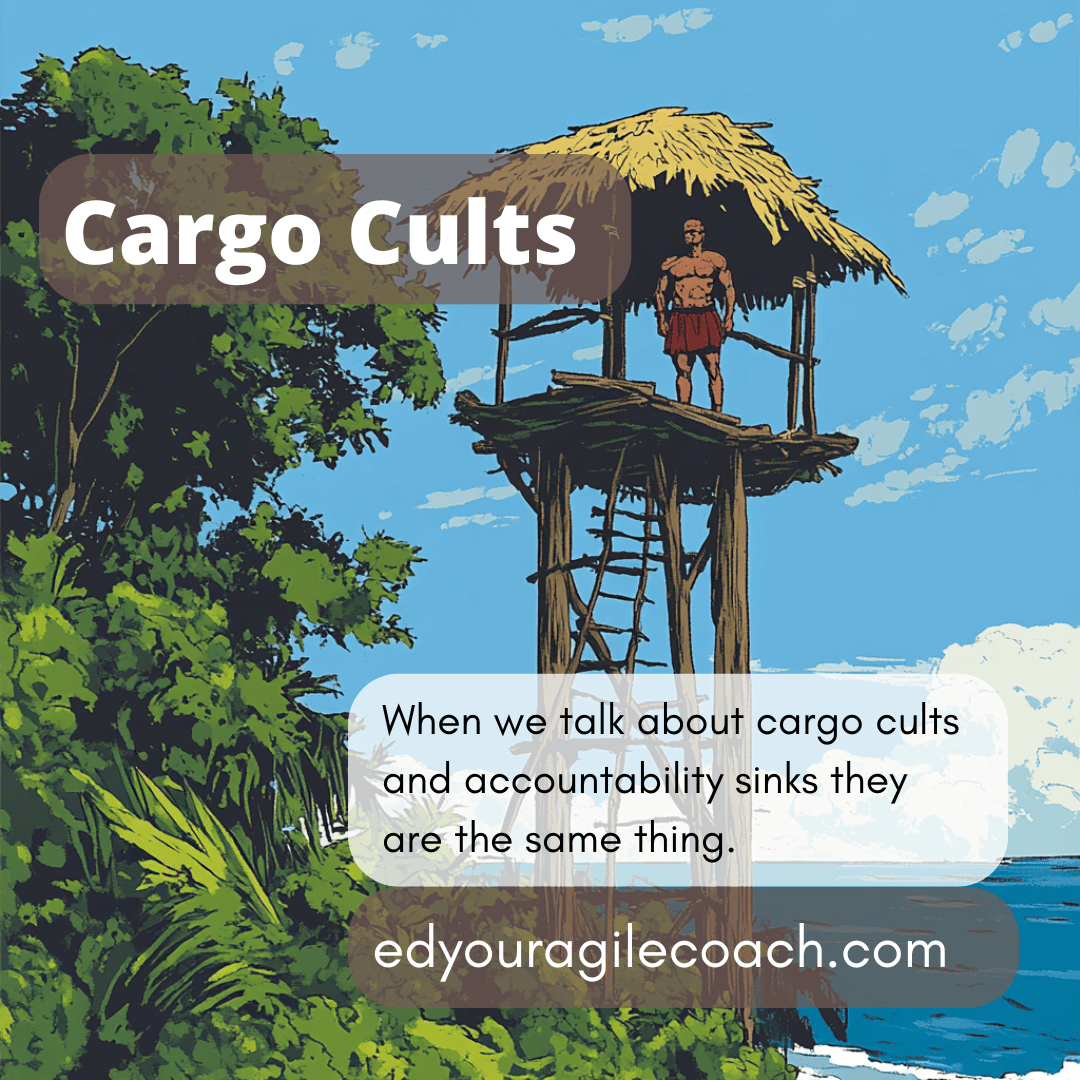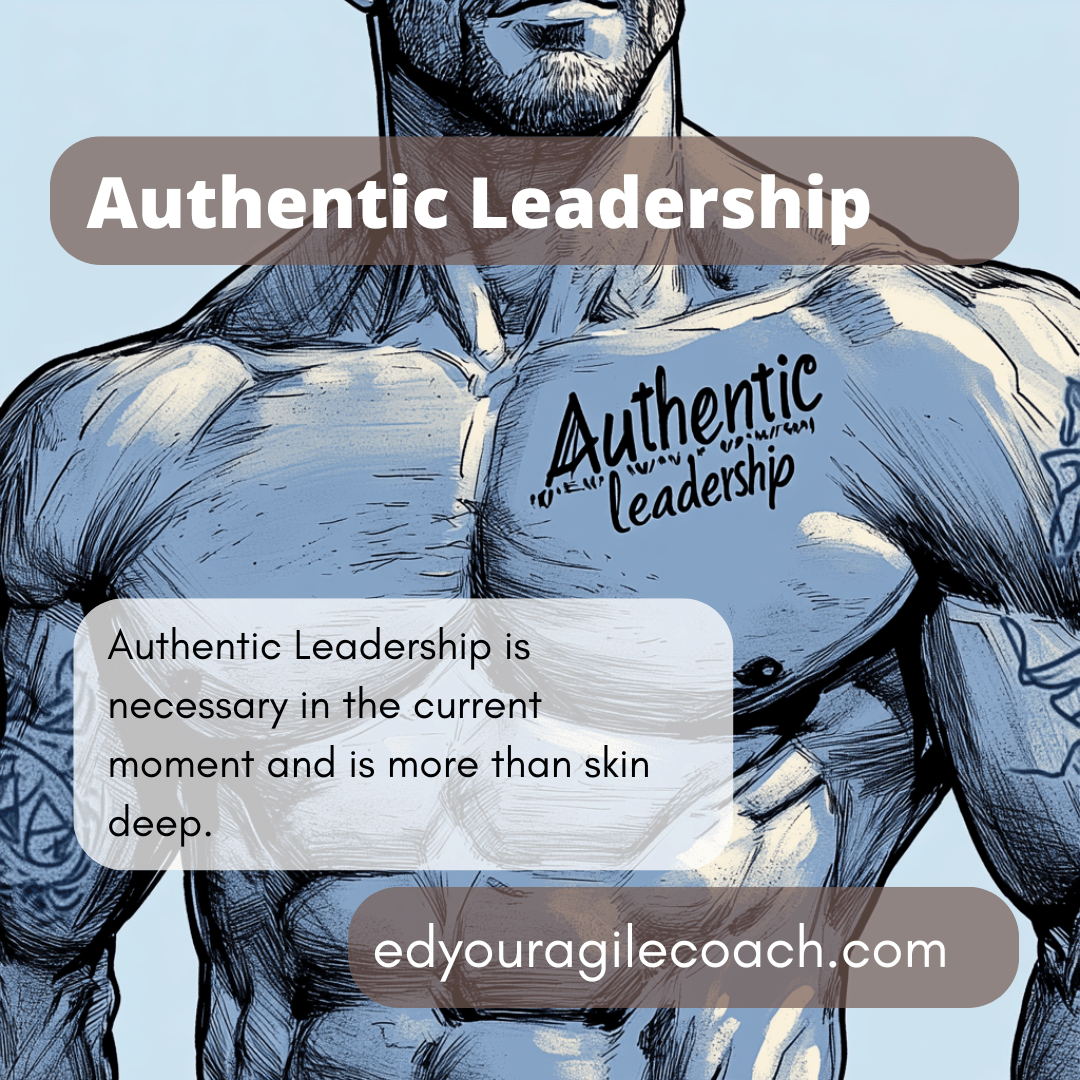Cargo cults and accountability sinks are the same thing.

The internet is a fine place to discover new and interesting information. Unfortunately, the demands of shareholder capitalism have made it harder to find handy insights into the world around us. For every Abigal Thorn on the web, we confront Jordan Peterson. It is not entirely hopeless because plenty of people are making reasonable faith efforts to provide informed opinions and new ways of looking at the world. One of these is Maarten Dalmijn, who writes often about Agile and organizational change. By some freak coincidence, both of us are reading Dan Davies "The Unaccountability Machine," and we have similar perspectives. Get ready for some nuanced discussion about the Agile reformation.
Maarten is one of the prominent thought leaders in the Agile world. People seek him as a blogger and speaker; he also authored a book on the subject. I aspire for my career to be like Maarten's. Posting on his blog, he talks about how organizations can abuse Scrum, and it becomes an accountability sink. An accountability sink is a procedure, set of rules, or process that prevents people from making decisions based on the situation. Dalmijn's example is not having a receipt when you attempt to return something to the store. Without that slip of paper, we will never get our money back.
If you read "The Unaccountability Machine," you will discover that the rule of law and accounting also act as accountability sinks. If the math is correct, no one questions the accounting numbers of a business. Accounting creates a shared understanding between people so we can interrogate if a company is spending its money wisely. Rarely do you see people questioning the accounting of a business. Instead, people ask uncomfortable questions about how much a company pays for raw materials. Cost accounting is a classic accountability sink.
The same is true for the rule of law. For instance, if you rob a liquor store, the prison term is three to five years. If you use a gun and fire the weapon in the robbery, the sentence automatically jumps to ten years. The judge has little choice but to implement the sentence because the legislature and legal president created an accountability sink, which removes the judge's discretion in sentencing the criminal. Accountability sinks are often necessary to enforce consistent judgments of behavior and a shared understanding of complex situations.
Where accountability sinks go wrong is that they often make it difficult to make judgment calls when it might be helpful to show some discretion. Accountability sinks also make it easy for decision-makers to avoid choices, particularly unpopular ones, because they can point to the accountability sink. Faced with this reality, Davies formulates the diminishing accountability hypothesis, which reads like this:
"Unless conscious steps are taken to prevent it from doing so, any organization in a modern industrial society will tend to restructure itself so as to reduce the amount of personal responsibility attributable to its actions. This tendency will continue until a crisis."
In other words, it is the mission of government and business to create as many accountability sinks as necessary. The process only stops when a problem crops up. I worked at an organization like this for five years, climaxing with a boss who hoarded authority but deligated most of his accountability and responsibility to others. Whenever there was a crisis or conflict, he seemed above it all and forced his subordinates to deal with the consequences. Eventually, he was promoted to Vice President before a private equity firm laid everyone off. It points me to the second thing Davies says early in his book.
"The extent to which you are able to change a decision is precisely the extent to which you can be accountable for it, and vice versa."
My former boss never made decisions, so he could never be held accountable.
People treat the scrum guide like an accountability sink. Teams go through the motions and hope the 'rules' of Scrum will save them. If something is not working, then they are not doing Scrum properly. The coach or scrum master doubles down on the process instead of asking difficult questions to the team or focusing on continuous improvement.
We have a name for this in the agile community called a 'cargo cult' approach. It is a phenomenon in aboriginal communities in the Pacific islands who built replicas of airfields and air traffic control towers, hoping U.S. suppliers return to their island. The technological, logistical, and intellectual understanding of the airfield was missing, so the islanders attempted to create a facsimile, hoping the cargo planes would return.
Cargo cult or accountability sink: if you do not understand why you do something, the results will be disappointing. Five generations of islanders are still waiting for the return of allied supply planes, although the war in the Pacific has been over for over eighty years.
So Maarten Dalmijn and I agree that doing Scrum thoughtlessly and dogmatically is a recipe for failure. It also will alienate business leaders and the technical professionals it is supposed to help. Focus on continuous improvement, delivering working solutions, and empirical evidence of change. The scrum guide will be less of an accountability sink and more of a helpful playbook for getting things done.
Until next time.




Comments ()